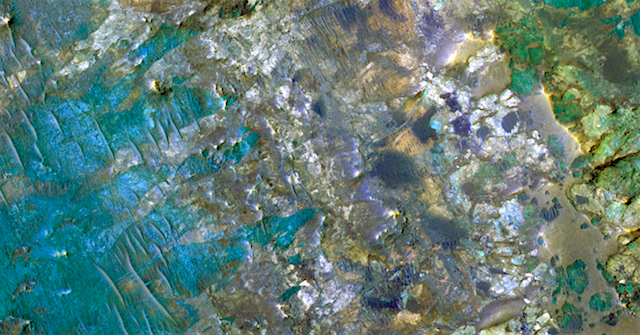 The planet Mars has long drawn interest from scientists and non-scientists as a possible place to search for evidence of life beyond Earth because the surface contains numerous familiar features such as dried river channels and dried lake beds that hint at a warmer, wetter, more earthlike climate in the past.
The planet Mars has long drawn interest from scientists and non-scientists as a possible place to search for evidence of life beyond Earth because the surface contains numerous familiar features such as dried river channels and dried lake beds that hint at a warmer, wetter, more earthlike climate in the past.
However, Dr Joseph Michalski of the Department of Earth Sciences & Laboratory for Space Research at The University of Hong Kong (HKU) and his colleagues have published papers recently that cast increased doubt on the idea of surface life evolving on Mars. These paradigm changing publications have recently been published in Nature Geoscience (December 2017) and Nature Astronomy (February 2018).
For the last 2.5 billion years, surface life on Earth has thrived largely due to the evolution of photosynthesis. Surface life is abundant and very successful because of the availability of sunlight, surface water, generally moderate climate conditions, and the protection of our magnetic field. But the planet Mars would have never experienced such habitable conditions at the surface. Michalski and colleagues published results in Nature Astronomy showing that the climate of Mars has probably been extremely cold and dry most of the time. They argue that the familiar aqueous features on Mars included widespread, weathered soil horizons, could have formed in geologically short climate “excursions.” In other words, Mars was cold and dry throughout its history and only had abundant liquid water at its surface during short episodes of climate change.
However, all hope for life on Mars is not lost. In another paper led by Michalski and published in Nature Communications recently, the scientists point out that the prospects for surface life on Mars might be dim, but the possibilities for subsurface life are promising. Life on Earth likely began in hydrothermal systems (environments where hot water reacts with rocks), and there is abundant evidence for many locations where hydrothermal environments exists on Mars at the time when life might have originated in similar environments on Earth. They argue that, in order to understand how life formed on Earth, we should ignore the surface environments on Mars and focus exploration on hydrothermal deposits… [More at links]








